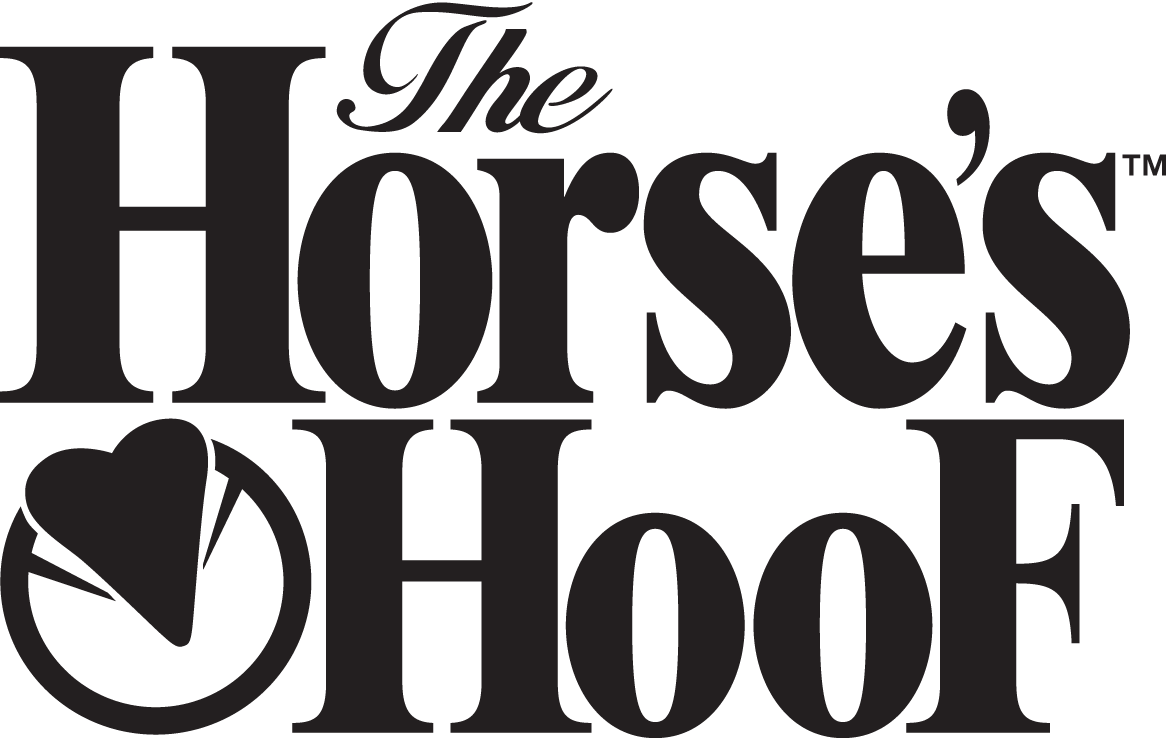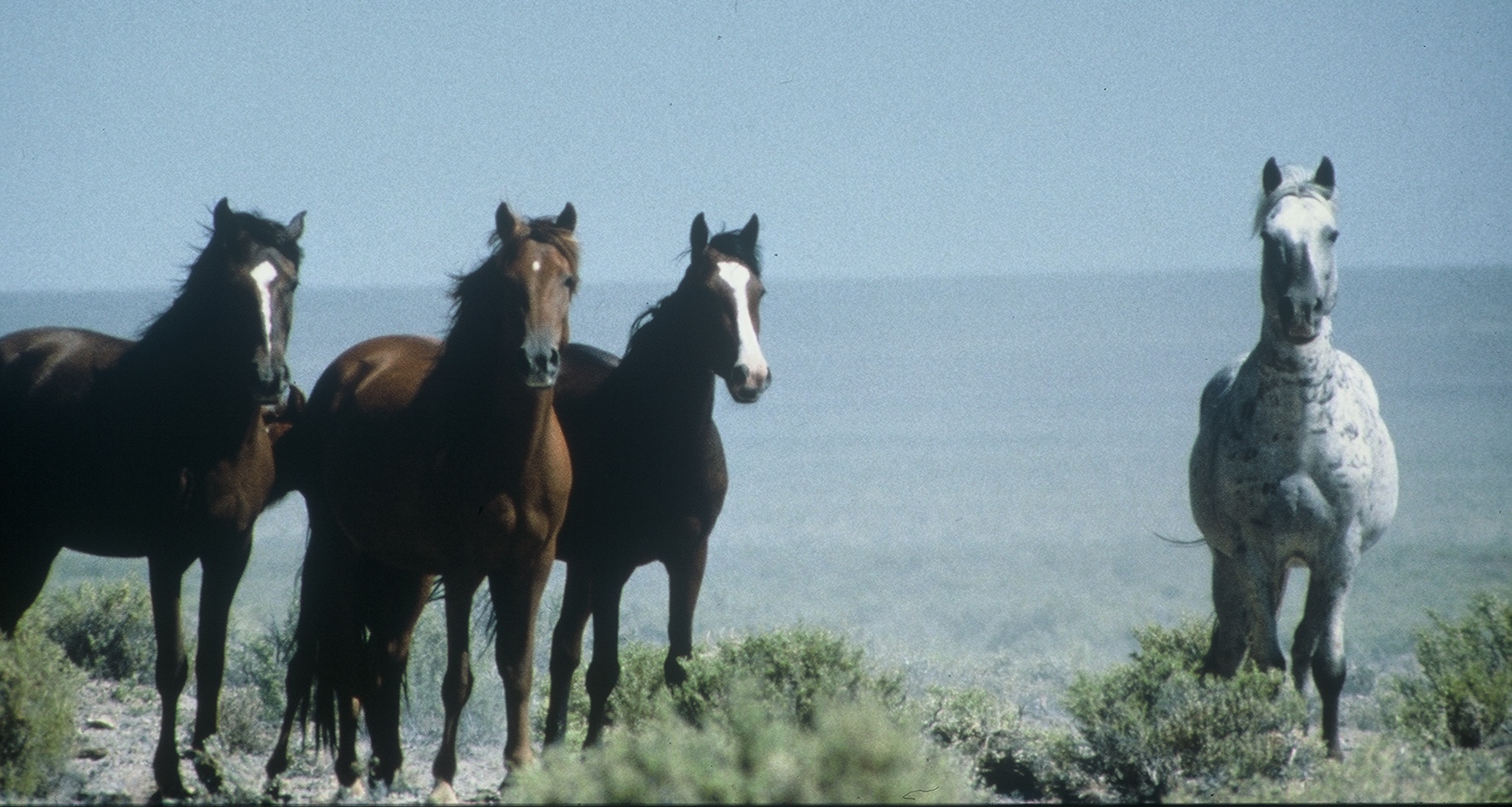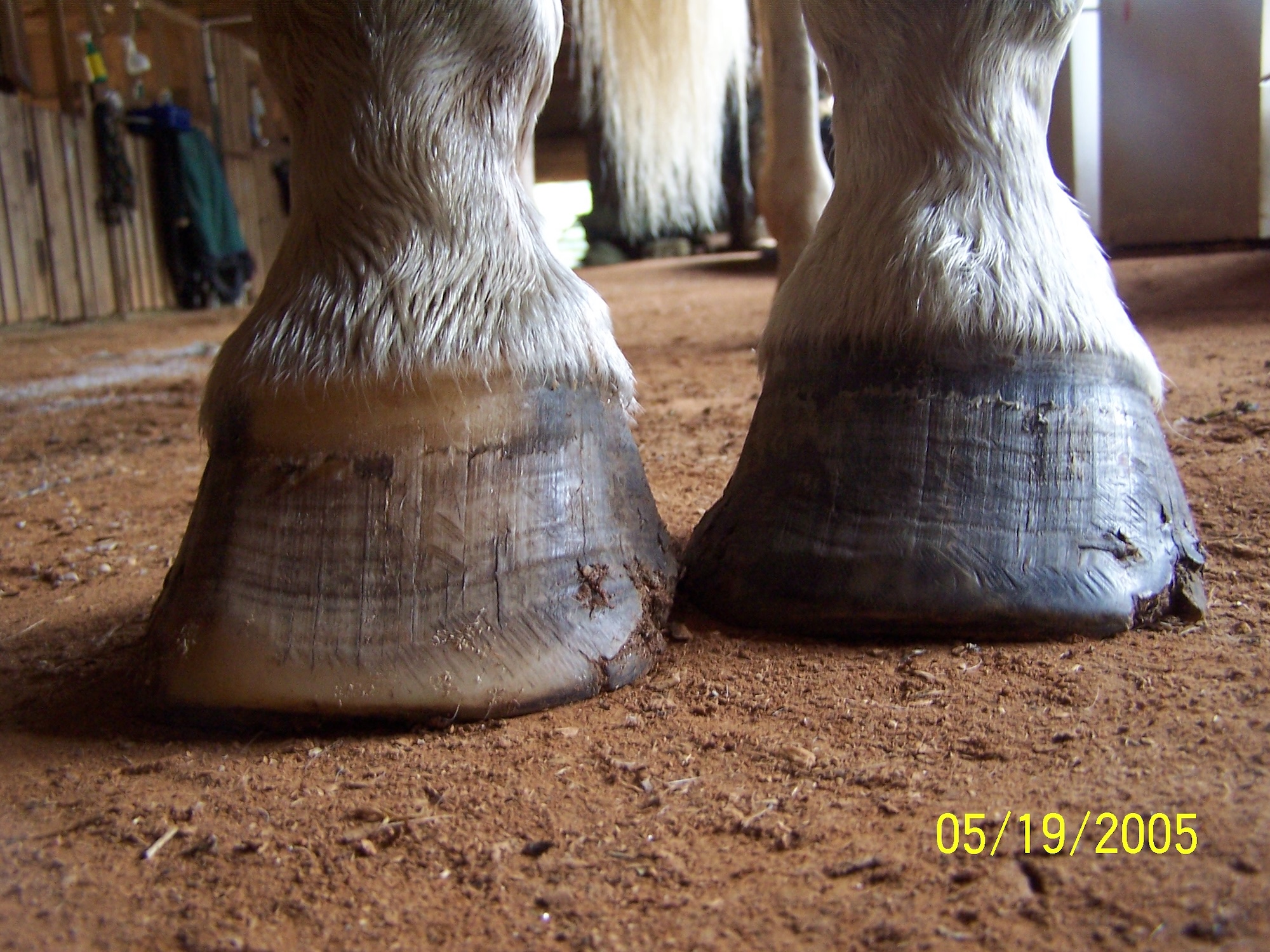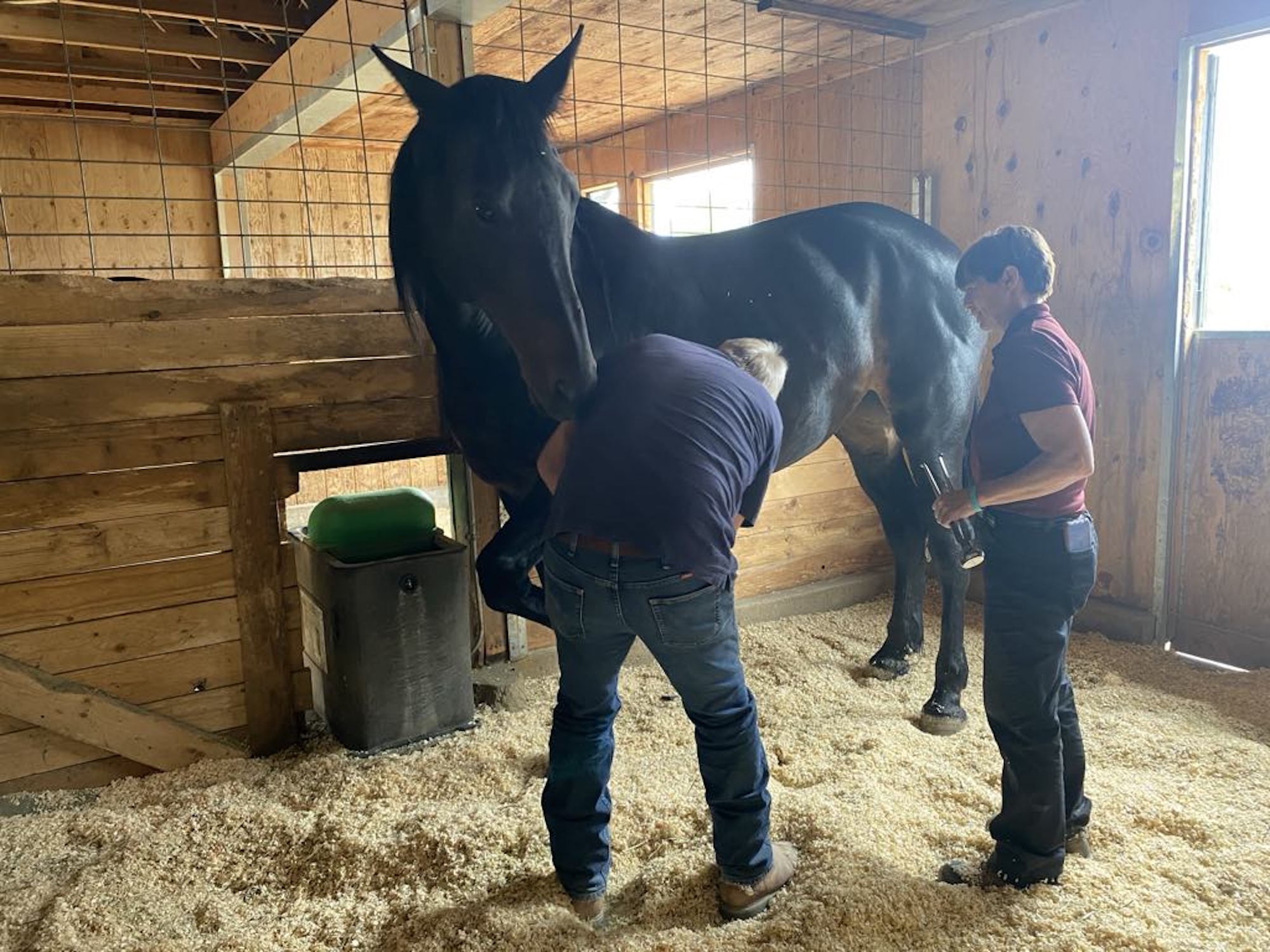During a time when the horse community seemed oblivious to any possible relevance of wild horses and their hooves, Jaime Jackson was bravely forging ahead, creating the beginnings of the world of natural hoof care as we know it today.
Jaime began his professional farrier career in the 1970’s, quickly became interested in the concept of a natural hoof model, and finally had an opportunity to observe wild hooves first-hand in 1982. He was able to extensively study wild horses for the next 5 years, and out of this experience he wrote his ground-breaking book, The Natural Horse: Lessons from the Wild.
He applied this wild horse knowledge to his work with domestic horses, and soon developed a wild hoof model for trimming. Inspired by the success he observed with these naturally-shaped hooves, he soon ended his horseshoeing business, and became America’s first “natural hoof care practitioner.” He has continued to be the pioneer in promoting natural horse and hoof care through his many articles, books, and the creation of the AANHCP: the Association for the Advancement of Natural Horse Care Practices.
The Horse’s Hoof interviews Jaime Jackson to get his unique perspective on the barefoot world and all the exciting developments that lay ahead…

Yvonne Welz and Jaime Jackson, 2008 AANHCP Reno Symposium & Conference in Reno, Nevada.
Yvonne: First of all, I’d like to tell you what a huge inspiration you have been to us, and without a doubt you are the founding father of barefoot in America. “The Horse’s Hoof” was born simply because I could not bear the thought of your Natural Hoof Care Advisor Newsletter coming to an end in 2000.
Like any “new” concept, natural hoof care has had quite a bumpy road this past decade, yet the momentum is now increasing, and things have never looked better! What are your thoughts on the state of natural hoof care today?

Mustang photos from The Natural Horse: Lessons From The Wild by Jaime Jackson. All photos courtesy Jaime Jackson.
Jaime: I believe the bigger picture ahead for the “natural care revolution” will continue to expand, and get better and more diverse. To put things into perspective, in 1982, when I went into wild horse country for the first time, there was really nothing going on and nothing being said or written about “natural” at all. Many of the concepts, methods, and even the language we are using today, didn’t exist then at all. All of that had to come about and be defined. That process, very much a grass roots one, continues to this day. It hasn’t been easy, but it certainly has seemed inevitable.
What is happening now, and I believe this is very promising, is that elements of the veterinary and research communities are now paying attention to what many of us have been doing for years. Seeing that it hasn’t failed or gone away, they are looking. Some of those people are now actively involved—they are not only “believers,” they are practitioners. This is good, because it means, in my opinion, that mainstream science will follow right behind them. It is a matter of time—and continuing perseverance from our end.
And here, precisely—the science of “natural care”—is where new paradigms of investigation and classification are going to have to take place. For example, science will have to grapple with the many conflicting or unclear definitions of what “natural” is, if meaningful research is to take place. The same goes for “holistic care.” I have always believed that such terms should have very specific meaning rooted in the horse’s “natural state”—which is what led me to the wild horse as a “model” in the first place. Since the early 1980’s it has been my observation that, once people are given the basics of what that model is about, the problem isn’t so much that the wild horse isn’t potentially valuable to them, but rather, how they can adapt that information to their horses in useful ways. That has always been the challenge.
Yvonne: What are your hopes for the future—the state of natural hoof care in, for instance, 10 years?
Jaime: First of all, I now think in terms of “natural horse care” rather than “natural hoof care.” The two are truly inseparable. I think the “hoof thing” took off first, for many of us, simply because hoof care, and hoof care problems, cross all disciplines. But, in fact, we must be holistic practitioners to be successful natural hoof care professionals.
But going with your question, I would say that the science and practice of natural hoof care will prosper and propagate in the future, as we gain a better understanding of related care: diet, boarding conditions generally, new paradigms for holistic veterinary care, training and riding methods, and genuine research of equine natural state. Since all of these things impact hoof integrity, they must all be looked at from the holistic perspective. I wrote about this in my first book, The Natural Horse (p. 154, Epilog), and still stand behind that message. I think there is much interest in this, and so I am hopeful that the bigger picture over the years ahead will be a bright one.

Mustang photos from The Natural Horse: Lessons From The Wild by Jaime Jackson. All photos courtesy Jaime Jackson.
Yvonne: What do think the average barefoot enthusiast can do to help promote barefoot in a constructive, positive way?
Jaime: If we are talking about horse owners who are “going barefoot,” they should try to be as responsible as possible. To me, this means educating oneself about “barefoot care” and using common sense. The AANHCP emphasizes the ancient maxim from the Hippocratic oath, “Cause no harm”—and this should be at the forefront of everyone’s thinking. And I think this is largely the case. On the other hand, I don’t think that people should simply recoil in fear of “going barefoot” and refrain from doing anything at all. Horses can do much, much better barefoot if the care is right, and I mean “natural,” and so there is an implicit understanding among enthusiasts that if they do it right, their horses will prosper, and, by example, encourage others to do the same. I think this is the best approach now to promote natural care at large—by responsible, personal initiative.
Yvonne: What about the average barefoot trimmer’s responsibilities, what can they do to help create a positive image for natural hoof care?
Jaime: Barefoot practitioners will no doubt continue to do what works best for them, and discard those things that don’t. I think those who embrace the holistic picture, however, will prosper the most —and provide the best examples. But they should also embrace good science that is based squarely on the natural state model. I think most try to do this, but the problem now is our scientific baseline is still very embryonic. Consequently, much that is still speculative (e.g., natural diet) is factored into a lot of our work, sometimes to the detriment of what we are doing. But as long as practitioners are honest about this lack of genuine science—our gaps in knowledge—I think horse owners will understand and try to cooperate until new information and resources are available. It’s been my observation that everyone is trying hard, and this esprit de corps will do much to keep the movement alive, healthy, and moving forward.
On a very practical level, practitioners will, of course, do best to promote a positive image by behaving in a professional manner. To me, this means being competently trained in the artful science of NHC, continuing one’s education over the long term, learning how to become a good educator (very important!), and supporting important research. These are the pillars of any viable discipline, and we shouldn’t be an exception as professionals.
Yvonne: What do think is the number one most important element in a successful transition from shod to barefoot?
Jaime: Clearly, this is educating the horse owner. Nothing will undermine one’s work quicker than a client who doesn’t really understand what this transition is all about—and how it works. Most of my clients have been with me for years. But each one had done their research before contacting me. I just had to make sure they understood enough before I took them on as clients. Every horse is an investment of my time, energy, and commitment to doing the right thing for that animal. There is nothing more discouraging than to have a client “jump ship” because they simply didn’t understand what is involved. Personally, I make sure they’ve read my books! Then I quiz them on specifics. Most of the time, however, they’ve done their homework before contacting me. The first meeting, on site, is to confirm that understanding by talking with them and looking at the horse together. On a more technical level, evaluating problems, how the hoof will heal over time, the use of boots, gathering measurements, conditioning the hooves, etc., are also discussed in detail.
Yvonne: What is your proudest hoof-related achievement?
Jaime: That would have to be my ventures into wild horse country (1982-1986), my hoof study of Great Basin wild horses, and then seeing that I was able to successfully adapt my findings to domestic horses in my care.

Mustang photos from The Natural Horse: Lessons From The Wild by Jaime Jackson. All photos courtesy Jaime Jackson.
Yvonne: Not meaning to get too personal here, but what is your everyday life like—do you still trim horse’s hooves? Still regularly study the wild horse?
Jaime: Yes, I still trim horses to this day (I am in my 60s). My career began as a farrier in the mid 1970s. Since the early 1980s, my shoeing practices gradually gave way to “natural hoof care,” parallel to my growing understanding of equine natural state. By the end of the 1980s, my shoeing career had ended, replaced entirely by NHC.
During the 1990s, a lot of my work involved writing articles, speaking at conferences, and giving clinics. Since the new millennium, I have authored additional books and, with others, undertaken the creation of the AANHCP—which, next to my wild horse research, has been the most monumental challenge I have ever known.
Additional wild research is on my agenda—but this will take place under the auspices of the AANHCP. A lot of discussion and planning is now underway “behind the scenes.”
I have lots of other interests too, but wouldn’t want to bore your readers!
Yvonne: What are your thoughts on all the disparate barefoot groups out there, often fighting against one another, much to the detriment of barefoot as a whole? What can we all do to change this?
Jaime: Actually, it’s pretty amazing! I mean that so many take this so seriously as to create every imaginable “barefoot discipline” you can think of, some in their own name, some as part of some entity or association, and so forth. This isn’t really so unusual either, as you see it in many other professional disciplines, in and out of the horse world. Just look around, there are lots of vet and farrier organizations, clinic gurus, and training programs out there. And all seem to know what’s best, too! It’s just human nature for people to “run with the ball” when they think they have it.
But to me, NHC is both serious business and deserving of being “in the mainstream”—not an alternative for “outsiders.” To get there, however, will—as I’ve suggested earlier—require good science and training programs with accountability. Also needed is progressive public education, and acceptance by the general horse-using community of our goals, based on effective and ethical practices.
I think much of the bickering and “fighting,” as you put it, is out there because these things are not yet come to pass. But they are coming—and, as things fall into position, giving us a more complete “whole,” much of the ostensive, unruly dissidence will give way naturally to the kind of healthy and germane debate seen in other fields of endeavor. If we, collectively, were to let this fall into the hands of self-serving “gurus” and fanatics —disingenuous individuals who, without reservation, intentionally or otherwise propagate misinformation, answer only to themselves, and guide the unwitting into corrupt regimens of harmthen I would say we are doomed. I don’t see that as being the case, however, so I am—once more —very hopeful.
Yvonne: Tell us all about the new developments with the AANHCP—including a complete name change, right?
Jaime: Right from the beginning of the AANHCP, the leadership recognized that the NHC revolution was an international one. Hence, the acronym—American Association of Natural Hoof Care Practitioners—seemed inappropriate. Also, since the focus sooner or later had to shift from the hoof to the holistic picture, we knew that the seemingly exclusive “hoof focus” also had to go.
But, since the “foot” seemed the logical starting point (based on it’s common concern across all equine disciplinary lines), it started there. In fact, I originally coined the term—and even protested it as the name took on legal stature! Finally, the decision was made to abandon the hoof focus altogether in 2007, when it became necessary to reincorporate the organization in California (from Arkansas). I think it was Bruce (Dr. Bruce Nock), who conjured the idea of “Association for the Advancement of Natural Horse Care Practices,” after much bantering and brainstorming between 20 or so of us!
The AANHCP continues to evolve as an organization. But it’s legal premise, to better the lives of domestic horses using the wild horse model, remains the same. What’s new and happening is a very big discussion, but with much brevity, we’ve improved the manner of providing training, increased instructor and student accountability in the training program, added a “booting specialist” training program (besides the trimming program), stepped up public outreach, opened our conferences to the public, laid foundations for recruiting and research, really a whole lot more.
Yvonne: Why should the average barefoot owner and/or trimmer get involved with the AANHCP?
Jaime: Of course, horse owners would get involved through our practitioners in the field. We’ve provided a practitioner “Locator List” on our public website for this purpose. In 2008, we should be opening new doors for horse owners, and others, to support our vital mission. This will be published on our public website, and will, among other things, involve hosting clinics and mini-symposiums, supporting our research agenda, and helping with projected student recruitment efforts.
As far as trimmers go, the AANHCP can provide training based on our holistic approach to hoof care, which now goes considerably beyond the sheer mechanics of trimming. Students in our programs have the golden opportunity to train with many instructors (now around 14 or so before they finish), all of whom are solid around our methods and principles. I only wish I had that when I set out to learn back in the 1970s! I think it’s our support structure that makes us so strong as an organization, and, of course, our dedication to carrying out our vital mission, based on the wild horse model. I can’t think of anyone out there who trims professionally who would not benefit from coming through our training programs. That’s how strongly I feel about what we have to offer.
Yvonne: What do you think is the most important take-home message we can obtain from the natural, wild horse?
Jaime: Truth. And there are many truths to be mined from this model. The wild horse, as I’ve written and spoken about many times over the past 25 years, gives us a vital window into the true nature of his species. One which, for the most part, that is unblemished by human meddling. How does he live naturally? What does he eat exactly? What are his feet like? What about his teeth? Does he have health issues, and how successfully does he solve them through his lifestyle? What does he need to be healthy? I have to say that we still know very little about the horse’s natural world. But the truths are still there—waiting for us to discover them.
by Yvonne Welz, published in The Horse’s Hoof Magazine, Issue 30, Spring 2008
See the full content listing of all issues of The Horse’s Hoof Magazine! We also provide instructions on how to read the issues for free on Hoof Help Online.
For a detailed listing of all articles on The Horse’s Hoof website, please visit our Article Directory.




